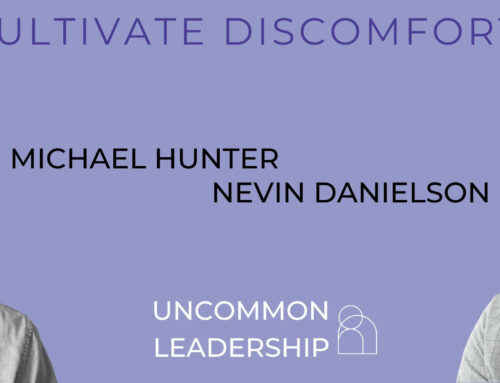In my consultation and coaching practice, a powerful, keystone concept is to think of work relationships as partnerships.
As in, two (or more) complete and independent entities that find value in collaboration. Each entity is there because they are receiving a benefit and they are there because they deliver a valuable contribution. In a partnership, we think of our interactions as fluid exchange of value, not one-sided or imbalanced.
Think of work relationships as partnerships.
Case in point, a number of leaders have shared some version of “I don’t know how X will react to this feedback. How can I ensure it is effective?”
With a partnership paradigm, we get to explore a pretty straightforward solution. “What would happen if you present your concern to them? What concerns would you have if you asked for their help to make sure the dialogue was productive?”
What subtle shift am I getting at? Why do I find this important?
Breaking the power dynamic – Conventionally we approach work relationships with a sense of “power over.” One person has more knowledge, experience or authority over another. That power dynamic can result in one-sided solution creation and less information flow. One side feels responsible to “have the answers” and once side feels responsible demonstrate alignment.
Objectifying the work – The more we can do to separate the work from the person, the more we free ourselves to operate without our troublesome human emotions – like our fear of being wrong, our discomfort with change and tying our self-worth into work initiatives. Seeing ourselves as a partner helps us say “I am a component of how this organization creates value. I am not defined by this work, but my my ability and my contribution.” I see a lot more valuable critical analysis of the work when we successfully separate it from the person.
Making communication more utilitarian – At every organization I’ve been inside, we’re too nice. In our efforts to be team players and to be liked, we minimize some truths and observations. It’s simply too uncomfortable to share things that are unexpected, may cause reactions or strike at someone’s ego. When we think in partnerships, it’s a bit easier to find words for what the organization needs.
Please let me know if thinking “partner” improves the messages you share.
Scenarios
Lead/Direct Report – “You’re consistently coming in late and it is disrupting our performance. I have to write you up.”
******
Partnership – “I’ve notice you are consistently coming in late. That’s having an effect on the team’s performance. What do you need to make sure we’re operating at our best?”
Peer 1 – “I hope this evil eye lets them know I’m frustrated.
Peer 2 – “Peer 1 has it out for me.”
******
Partnership – “You’ve done a few things that have made me upset and feel a bit resentful towards you. It’s only fair that I tell you what I’ve experienced.”
Direct Report/Lead – “I feel like I have more to give. Please consider assigning me more territory.”
******
Partnership – “I’ve been thinking about how best to increase our sales and reduce your workload. Here is my recommendation to redistribute part of your territory. I look forward to your thoughts. I trust that if this isn’t the right answer, you’ll still look to me to help us increase sales and reduce your workload.”
Want some help observing how this works in your organization and identifying some ways we can influence it? Doing so is fun, energizing and transforms the performance of your organization. Please reach out if you want me to share some of the interventions I’ve found most effective at evolving this paradigm.




